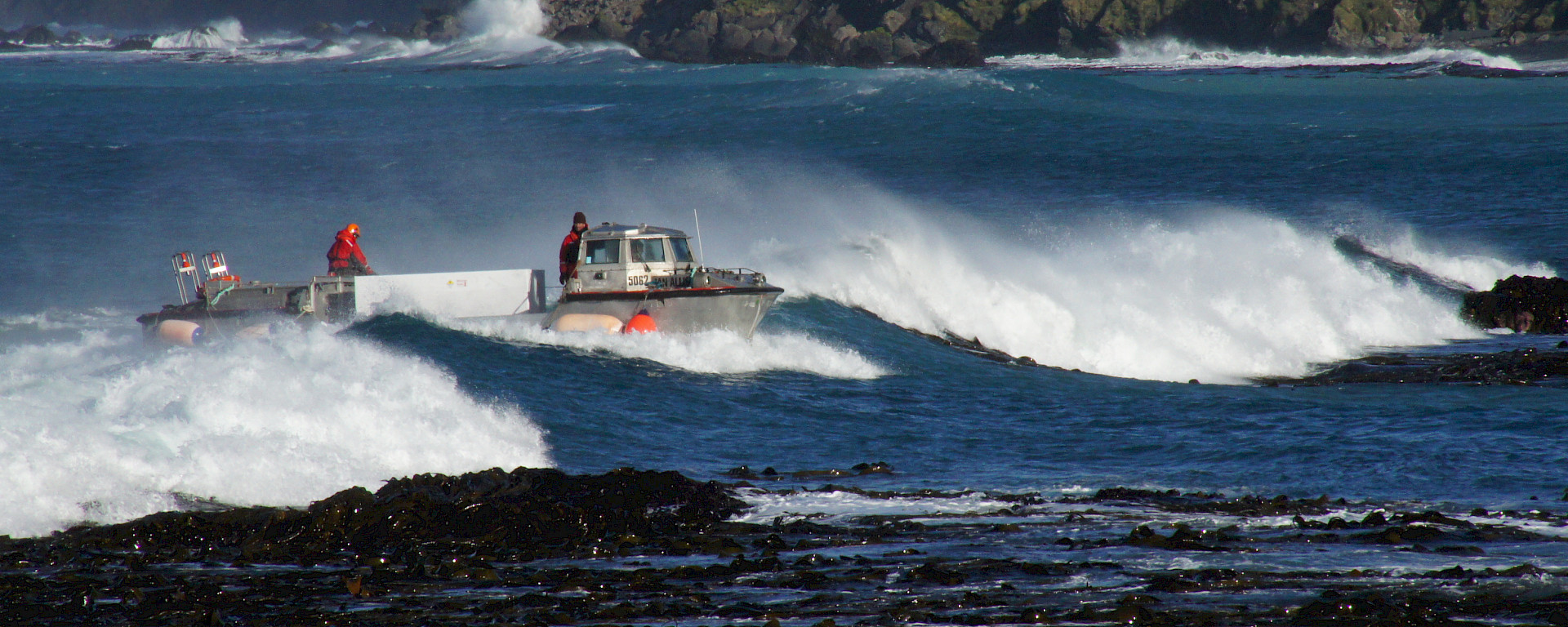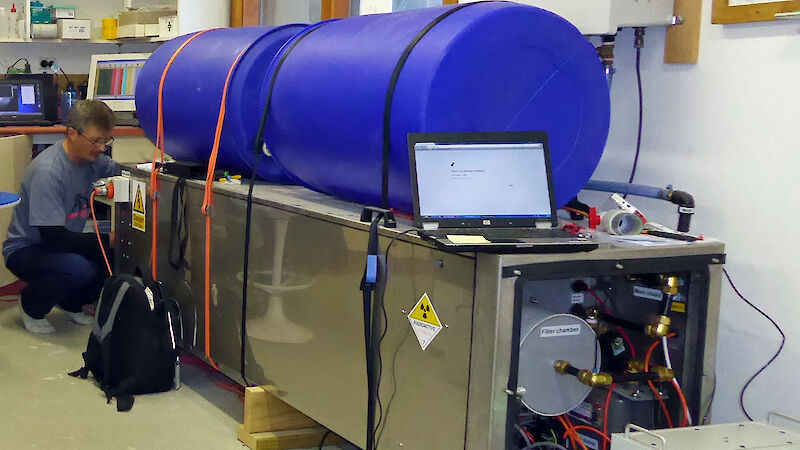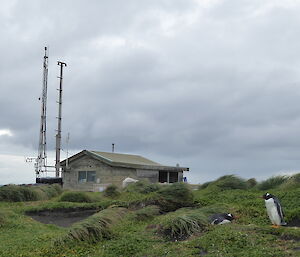“Radon” sounds like it could belong in the realms of science fiction, but it’s actually a natural, radioactive gas released by soils and rocks, as well as building materials made from these sources.
While exposure to high levels of radon has health implications, the properties that make it a health-hazard also make it useful for atmospheric research.
In collaboration with Australian Antarctic Program researchers, the Australian Nuclear Science and Technology Organisation (ANSTO) has been running a radon detector at Macquarie Island for the past six years. The data collected is helping scientists understand the mixing and movement of air in the earth’s atmosphere and the fate of airborne pollutants and greenhouse gases.
Environmental physicist Sylvester Werczynski, from ANSTO’s Isotope Tracing in Natural Systems facility, said the detector monitors low radon concentrations that are indicative of pure “baseline” air coming across the Southern Ocean. However, sometimes the measured radon concentrations are larger than expected under baseline conditions. When this happens, it indicates that the air has travelled over land in the past one or two weeks and may be contaminated by human sources of pollution.
“Radon has a short half-life of only 3.8 days (the time it takes to decay to half its original concentration), so it does not remain in the atmosphere for long. However, because it is continuously emitted from all land masses, it is constantly being renewed,” Mr Werczynski explained.
“Radon emanations from the ocean are 100 to 1000 times slower than they are over land, so the ocean contributes very little to the atmospheric radon concentrations in comparison. So when an air mass moves off the land and over the ocean, we can use the gas as a tracer of recent continental influences on the air measured at Macquarie Island.
“The amount of radon in the air sampled at Macquarie Island is indicative of the residence and transit times over land and oceans. It is also indicative of the exchange or mixing of air masses between the troposphere (lower atmosphere) and the stratosphere. And because most human activity occurs over land, radon is considered to be a proxy for the movement of pollutants.”
Mr Werczynski said the radon detector at Macquarie Island represents one node in a broad network of high sensitivity ANSTO monitors around the Southern Ocean, at sites ranging from Cape Point at the southern tip of Africa, Cape Grim in Tasmania, to King Sejong station on the Antarctic Peninsula and Jang Bogo station (Terra Nova Bay) in East Antarctica, as well as aboard the Australian Marine National Facility RV Investigator.
The detector was installed as part of a collaborative Antarctic project looking at greenhouse gases in the southern atmosphere, led by CSIRO scientist Dr David Etheridge, and provides one of many measurements used by the project.
“The atmospheric radon measurements contribute to international efforts aimed at improving our understanding of mixing and transport processes in the earth’s atmosphere, with a strong focus on the sources and fate of airborne pollutants and greenhouse gases,” Mr Werczynski said.
How does the radon detector work?
Air is sampled from above the roof of the clean air laboratory on Macquarie Island and first passes through an air filter (the panel on the wall in the main image above). This filter removes any salt-spray, dust or other aerosol pollution, as well as the radon “progeny” (products of radon’s radioactive decay process) in the sampled air stream.
The air then enters the “thoron delay volumes” (the big blue drums in the photo). Thoron (Rn-220) is an isotope of radon (Rn-222) and can interfere with the measured radon signal. As the half-life of thoron is only 55.6 seconds, it can be almost completely removed by delaying the sampled air in these thoron delay volumes by 5 or 6 minutes.
The air then passes into the main “delay” volume (the big silver tank), which allows the radon to decay under controlled conditions. From there the air passes through a screen, which collects the newly formed decay products. The screen sits close to a “zinc sulphide scintillator”, which emits light when struck by radiation from radon decay. The scintillator is connected to a “photomultiplier tube” which detects this light. This detection is processed electronically and recorded as a count rate by a data logger.




